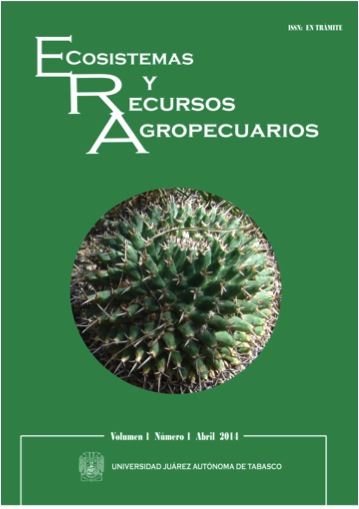EFFECT OF TEMPERATURE ON HATCHING AND GROWTH OF CUBAN GAR (Atractosteus tristoechus) LARVAE
DOI:
https://doi.org/10.19136/era.a1n1.3Abstract
Hatching success, growth, development and survival of Cuban gar (Atractosteus tristoechus) larvae were examined at different temperatures (26, 28 and 30 ºC) up to 18 days after hatching (DAH). The time to hatching was inversely related to the incubation temperature (87, 100 and 111 h). Larval survival at the time of hatching was significantly lower at 30 oC (50.3 %), coinciding with the highest larval mortality (30.2 %). Growth rates were 1.75 mmd-1 -10.4 % d-1 at 26 ºC,1.30 mm d-1 -10.2 % d-1-1 at 28 ºC and 1.40 mm d-1 -10 % d -1 at 30 ºC. Three similar critical periods were identified: 0-6, 7-11 and 12-18 DAH. During the first period, a similar increase in weight and a significant increase in total length occurred, mainly at 30 ºC, indicating a more efficient reconversion of the yolk reserves. Later, growth was equally slow, corresponding with the transitional period from endogenous to exogenous feeding, indicating a similar physiologic pattern regardless of incubation temperature. Weight and length increased during the last period, with the greatest increase at 26 ºC in contrast with the lowest gain at 30 ºC. The inflexion points of many morphometric characters and the developmental stages accelerated with the increasing temperature. Although it was impossible to determine the optimal temperature, it was evident that 26 ºC favored hatching success and larval growth.
Downloads
Downloads
Published
Issue
Section
License
Aviso de copyright
Los autores que se envían a esta revista aceptan los siguientes términos:
una. Los autores conservan los derechos de autor y garantizan a la revista el derecho a ser la primera publicación del trabajo con una licencia de atribución de Creative Commons que permite a otros compartir el trabajo con un reconocimiento de la autoría del trabajo y la publicación inicial en esta revista.
B. Los autores pueden establecer acuerdos complementarios separados para la distribución no exclusiva de la versión del trabajo publicado en la revista (por ejemplo, en un repositorio institucional o publicarlo en un libro), con un reconocimiento de su publicación inicial en esta revista.
C. Se permite y se anima a los autores a difundir su trabajo electrónicamente (por ejemplo, en repositorios institucionales o en su propio sitio web) antes y durante el proceso de envío, ya que puede conducir a intercambios productivos, así como a una cita más temprana y más extensa del trabajo publicado. (Consulte El efecto del acceso abierto).

